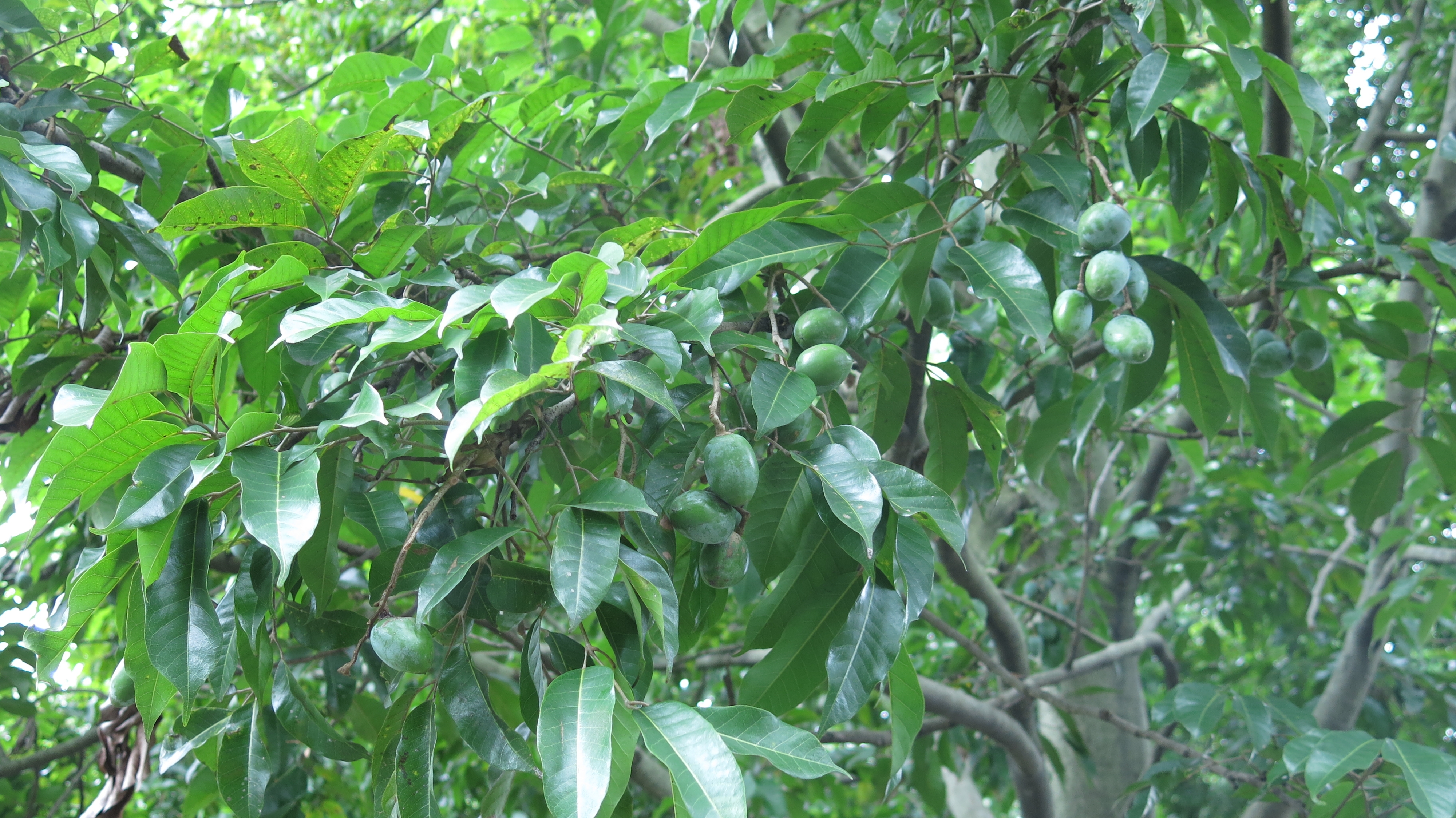Pili
(Canarium ovatum)

Description
Canarium ovatum, the pili, is a species of tropical tree belonging to the genus Canarium. It is one of approximately 600 species in the family Burseraceae. C. ovatum are native to the Philippines. They are commercially cultivated in the Philippines for their edible nuts and is believed to be indigenous to that country. The fruit and tree are often vulgarized with the umbrella term of "Java almond" which mixes multiple species of the same genus, Canarium. The C. ovatum tree is a symmetrically-shaped evergreen, averaging 20 m (66 ft) tall with resinous wood and resistance to strong winds. It is dioecious, with flowers borne on cymose inflorescence at the leaf axils of young shoots. As in papaya and rambutan, functional hermaphrodites exist in C. ovatum. Pollination is by insects. Flowering is frequent and fruits ripen through a prolonged period of time. The ovary contains three locules, each with two ovules; most of the time only one ovule develops. The C.ovatum fruit is a drupe, 4 to 7 cm (1.6 to 2.8 in) long, 2.3 to 3.8 cm (0.91 to 1.50 in) in diameter, and weighs 15.7 to 45.7 g (0.035 to 0.101 lb). The skin (exocarp) is smooth, thin, shiny, and turns purplish black when the fruit ripens; the pulp (mesocarp) is fibrous, fleshy, and greenish yellow in color, and the hard shell (endocarp) within protects a normally dicotyledonous embryo. The basal end of the shell (endocarp) is pointed and the apical end is more or less blunt; between the seed and the hard shell (endocarp) is a thin, brownish, fibrous seed coat developed from the inner layer of the endocarp. This thin coat usually adheres tightly to the shell and/or the seed. Much of the kernel weight is made up of the cotyledons, which are about 4.1 to 16.6% of the whole fruit; it is composed of approximately 8% carbohydrate, 11.5 to 13.9% protein, and 70% fat. Kernels from some trees may be bitter, fibrous or have a turpentine odor. C. ovatum's distribution range is the Philippines. C. ovatum is a tropical tree preferring deep, fertile, well drained soil, warm temperatures, and well distributed rainfall. It cannot tolerate the slightest frost or low temperature. Refrigeration of seeds at 4 to 13 °C (39 to 55 °F) resulted in loss of viability after 5 days. Seed germination is highly recalcitrant, reduced from 98 to 19% after 12 weeks of storage at room temperature; seeds stored for more than 137 days did not germinate.
Taxonomic tree:







